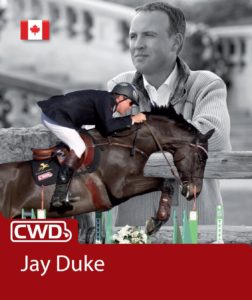The Olympic Individual Show Jumping concluded last week in a thrilling and emotional event in Brazil, and fans worldwide watched as the sport took on a different look. It is fitting that 58-year-old Nick Skelton, one of the greatest riders of all time, capped a spectacular career in golden fashion. The scorecard looked dramatically different than in previous Olympics, and the audience loved it. How and why did this happen?
Sporting culture has changed in the past 20 years, and Show Jumping needed to keep up or be left behind in the ultra-competitive battle for fans attention. People still love to watch a literal car wreck, but these days they have reality TV to fill that void. People do not want to see horses or riders hurt, they want their excitement through drama and success. That is what we witnessed in Rio, and you can expect to see more of that in the future.
Four riders were disqualified for ‘rough riding’. As a rider I did not like to see these rulings as I have empathy for the work these riders put in to attend these championships, but as a fan it was the right decision and has my full support. The message is clear, ANY form of what can be construed as excessive force will not be tolerated. This raises the bar on the training of rider and horse to an even higher level, and I am all for that.
The biggest change though was in the scorecard of the class. Team scores were better than normal, but I am focusing on the individual results. Here is some insight into the mind of a rider: We hate large jump-offs! It’s very difficult to produce clear rounds at the top level, and when you do you want to be rewarded. So when there were six double clear rounds in Rio, my immediate thought was ‘whoops, it’s too easy.’ The highly respected (and with good reason, he is my favorite designer as a rider) Guilherme Jorge had missed. How can you be double clear in the Olympic final and not medal? AND that was going to happen to three riders? Double clear historically means an automatic medal in modern Show Jumping.
What transpired next was the most dramatic jump-off in World Championships history and vindicated Mr. Jorge, who as it turned out did his job perfectly and ushered in the future vision of Equestrian Sport. In order for the sport to continue in the Olympics, the TV and social media numbers need to be high. Riders will always watch, it’s about attracting the casual fan to the sport that will determine its success or failure on a worldwide scale.
As I just mentioned, six horse/rider combinations were double clear in Rio in the Individual Final, with Nick Skelton and Peder Fredricson triple clear. The Swedish rider jumped 3 clear rounds and ended up with silver. This is unprecedented in modern Olympic history. In the past 20 years there have been a total of three riders who jumped a double clear at the Olympic final. In Athens, Sydney, and Atlanta nobody was able to accomplish the feat.
This historical shift happened for two reasons: First, there is more depth in the sport than ever before. You could legitimately say that twenty riders were very capable of winning Gold in Rio, more than ever before. Having the top 35 riders enter the final round on a clean slate is unique and creates amazing drama.
Secondly, Olympic Show Jumping is no longer who can ‘survive’ the massive jumps. It now combines huge jumps with more technique and style. The competition ended up with a very deserving winner, as Nick and Big Star are both superstars in jumping and now have an Individual Gold Medal to go with their Team Gold Medal from London 2012.
The fans were treated to Show Jumping that is perfect for the world today. Drama, brilliance, athleticism, and no disasters. Expect to see more of this in the future, and that is good for the horses, the fans, the sport, and ultimately the riders.
About Jay Duke: Jay has been a Canadian Equestrian team member, and has represented his country at shows in Washington, New York, and Toronto. He’s been the leading rider at the Spruce Meadows North American Championships, trained notable hunter and USEF horses such as Mindful, King David, and Caymus, and coached two riders to medal-winning performances at the NAJYRC. He is also a senior course designer with Equestrian Canada and offers clinic opportunities around the world. You can read more work from Jay Duke at his website, jayduke.com


